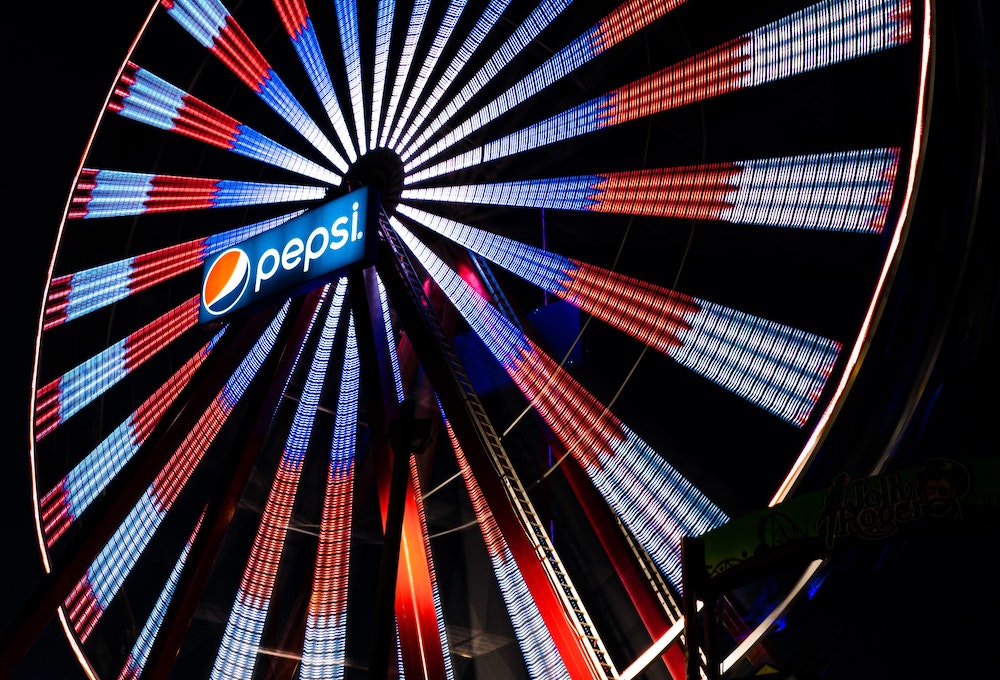How to do market research for branding to improve your brand strategy

Great branding doesn’t just fall from the sky.
Behind the best brands in the world—yes, the ones you’re suddenly imagining automatically—there’s a lot of strategy fueled with market research, that has shaped every part of their branding—down to the last curve in their typeface.
If you’re in the process of building on your existing brand or setting up a new one, don’t miss out on what the market can teach you about what works and what doesn’t.
Here we’ll look specifically at conducting market research with the purpose of shaping your branding, with actionable steps.
Let’s get going.
What is branding?
Branding is how a company presents itself to the world. It encompasses everything from the company’s name and logo to the way it talks about itself to the public.
Contrary to popular belief, branding is about a lot more than colors and images. A tone of voice, a mission, values—it’s all part of it.
Good branding creates a positive impression in the minds of consumers and helps them remember the company. Great branding makes people fall in love with brands, and follow them almost blindly.
Let’s look at a commonly used example in branding, Coca-Cola, and how it compares to fierce rivals Pepsi.
Neither of them go overboard with a crazy color scheme. It’s a lot of red and white, and Pepsi—daringly, ooh! — threw some blue in the mix. The fonts are different, but neither of them is spectacular. Yet people associate both brands with different things, and that’s because of how Coca-Cola and Pepsi have branded themselves.
Coca-Cola focuses heavily on relationships, friendships, family—it’s a drink to share with other people. Just look at any of their ads. It’s always a group of people, or two people, having a moment over a cold Coke. Heck, they even brought families together by introducing Santa to us.

Then there’s Pepsi, which focuses on events. It’s the drink you have at an Ed Sheeran concert, a big sports game, and Coachella.
The secret ingredient in cola for the biggest brands is not some additive, but their branding. That is what makes them so wildly popular.
4 ways market research helps to improve branding strategy
There are many ways that market research can inform your brand strategy, and the benefits can’t be overlooked. If you’re not convinced yet on making brand research part of creating your company’s brand image, these advantages should do the trick.
It can help you avoid mistakes
Let’s talk about branding blunders. Because frankly, they’re fun, and they show you the importance of market research when doing anything brand related, from a single campaign to a full marketing strategy.
Brands often get it wrong when they try to shift their focus a little, or when they intend to capture a new target demographic.
There are two target audiences that are grossly misunderstood and where it is honestly surprising that to this day, brands still seem to make similar mistakes (that could’ve been avoided with a little market research).
We’re talking about women, and young people.
When brands shift to women, they often feel that the color pink (or even just the word) will make it clear enough and have women fall head over heels in love with them.
Brew Dog tried rebranding their Punk IPA as a Pink IPA—beer for girls—and missed the mark. Even BIC—the office supplies brand that almost doesn’t need any introduction anymore—made a similar mistake by introducing For Her, a pen for women. Which was nothing but regular pens, packaged in pink and purple. We can go on about how that’s wrong, but Ellen DeGeneres did it way funnier than we can.
And even Pepsi isn’t immune to embarrassing themselves. They took their event-focused branding a little too far, and launching a campaign around protests. Yes, this can be considered an event, but their approach with Kendall Jenner bringing peace by bringing Pepsi was not taken well by anyone.
It can help create a customer-centric brand
Many brands seem to struggle to connect with their audience further down the road. Their brands are often created behind closed doors, with only people in the company giving their two cents on what the brand should look like. That can make it hard for potential customers to connect with the brand, and harder for marketers to achieve brand growth.
That’s why we’d recommend using the best market research tools, so you get a chance to talk to consumers and find out what they’re looking for in a brand. Take out the guesswork!
It helps when launching a new product or service
Brand research shouldn’t only be done when a new brand is created. Launching a new product or service can be tricky. Will potential customers recognize it as a part of your brand?
If you use what you learn in market research 101, they will. Focus on what is happening in that undiscovered territory and find out how you can successfully claim that part of the market with an unbeatable competitive advantage, whether it’s with a new brand or ‘just’ a new product or service for an existing brand.
It’s crucial in improving brand perception
Market research is an essential part of branding, and it can be used to improve brand perception in a number of ways.
Market research can help you define your brand’s personality, and with the right research methods, you can check in with your audience to see if this personality is hitting the spot—or missing the mark.
The best way to check in with them is through surveys. It helps you gather large amounts of reliable data, and respondents can be honest and open in their answers.
To take the first step in improving your brand perception, check out our free brand perception survey template, with questions to inspire you and get started easily.
The most important elements of branding
There’s more than meets the eye, especially when it comes to branding. Let’s look at some of the visual elements and also the less tangible elements of branding that aid your brand’s success.
Logo
A good logo is important for a brand for a number of reasons. First, it helps to create a recognizable identity for the brand. Consumers will remember the logo and be able to identify it quickly. This is especially important for global brands that operate in several countries.
Secondly, a good logo can help to create a positive association with the brand. It can communicate the values and mission of the brand to consumers. A well-designed logo can also be an effective marketing tool, helping to generate publicity and attract new customers.
But a logo can’t do it all. Don’t try to pack everything in it. Choose an important thing people need to know about your brand, an essential element, and try to communicate that through the logo. The rest should come from other elements in your branding.
Value proposition
A strong unique value proposition is essential for branding. In fact, all other elements of your branding will stem from this. It helps set straight what you want to communicate when it comes to values and mission of the brand to consumers, and can be an effective tool to test whether anything you create is aligned with what you want to be known for.
What do people *really* think about your logo??
Find out what people think about your brand’s creative and how it makes them feel—reach 150+ million consumers in 59 markets with Attest.
Find out if your creative worksColors
Color is an important element of branding, and can be used to communicate a wide range of messages to consumers.
Different colors can evoke different emotions and reactions, which can be useful for brands looking to create a specific mood or feeling.
For example, red is often associated with excitement and passion, making it a good choice for brands looking to create a sense of energy and enthusiasm. Blue is often associated with trust and reliability, making it a good choice for brands looking to create a sense of security and dependability.
Graphics
Graphics are another important element of branding, and can be used to communicate key messages about the brand to consumers. They should be simple and easy to understand, so that people can quickly absorb the information they contain. Don’t try to reinvent the wheel, the play or pause button, or anything else people intuitively know.
Tone of voice
The tone of voice used by a brand is important for creating a consistent and coherent brand identity. It helps to create a distinct personality for the brand and can be used to communicate key messages to consumers.
See it like this: the tone of voice is as important to a brand as the way you speak is to your friends, family, lovers and colleagues. It matters. It can change how people feel. It makes you easy to recognize.
If you do it right, that is. Your tone of voice should be consistent across all branding materials, from advertising to customer service interactions. It should be friendly, upbeat, and positive, and should never sound condescending or unprofessional. Some brands are wittier than others. If you choose a certain direction, make sure you stick with it. If it’s authentic, this should be relatively easy to do.
Positioning
When it comes to positioning, it’s important to think about what you want to be known for. What is the one thing that you want people to remember you for? What do you want to be known as?

Once you have this figured out, you can start to create a positioning statement. This statement will encapsulate what your brand stands for and will help to communicate it to consumers. It should be clear, concise, and easy to understand. Don’t overcomplicate things. Being unique doesn’t do any good if people all have a different answer to ‘who you are’.
How to conduct market research for branding
Doing market research is one thing, doing it with the purpose of fueling your branding strategy, is another. Here’s how we’d go about it.
1. Define what you want to research
What influences your branding?
It’s the current landscape of competitors. It’s your current customers and the ones in target markets you hope to reach soon. The state of the world, trends happening in your market and in society in general. It’s also your own take on things.
Define all the areas that are relevant to your branding strategy and include those in your research.
The more you know about your industry and your target market—through things like market trend analysis—the better equipped you’ll be to create a branding strategy that resonates with them.
2. Talk to the people that matter
The first step in good branding is knowing your audience. Who are you targeting? Once you know that, it’s a lot easier to tailor your branding to their needs and wants.
One of the best ways to learn about your audience is through market research. Surveys, focus groups, interviews, and questionnaires can give you a lot of valuable information about what people think of your brand—the good, the bad and the indifferent.
For this, it’s crucial that you talk to the right people. You want to avoid creating a brand that resonates with the neighbors of your ideal customers. It’s close, but not exactly who you want. Choosing the right market analysis tools is what will determine your success.
With Attest, you can filter through an audience of 150+ million people in 59 countries. Thanks to our laser-focused filters, you can speak directly to the people who matter. With an online survey that is tailored to your needs, you can get to the bottom of the public opinion, their pain points, and wishes—and take action based on that.
See our brand tracking templates and real-life surveys
Our in-house experts—the Customer Research Team—have written these brand tracking survey templates that are ready to go! And see the brand tracking case studies from surveys we’ve sent to real consumers.
3. Test your branding
Don’t just blindly launch your brand into the world and hope for the best. With some creative testing, you can confidently present your branding. You can also use market research to test new branding ideas before implementing them. This will help you avoid costly mistakes and ensure that your branding is resonating with your target audience.
4. Be consistent and check in on your brand awareness
The key to building a successful and strong brand is to keep your hands on the wheel and eyes on the road. In other words: keep checking in and remain focused.
Once you’ve settled on a branding strategy, be sure to stick to it. Consistency is key when it comes to branding. If people see different messages from your company or different visual elements, it can be confusing and counterproductive.
The only way to truly measure brand awareness is by diving into your target audience. With our free brand awareness survey template, you get a head start and know which questions to ask, and how to ask them.
It’s important to have a clear idea of who you are as a brand and what you stand for, and then communicate that consistently across all channels—from your website to your social media channels to your advertising materials.
You can test yourself to see whether you are doing this, by conducting regular brand tracking studies. Check in on how you’re doing when it comes to brand awareness, how your brand perception and reputation are performing and whether you’re winning on brand recall and recognition.
5. Use market research tools to be in control of your research
Market research tools are essential for improving branding strategy efficiently. These tools allow you to gather all the data you need about your target audience, market trends and competitors, whenever you need it.
By using market research tools (instead of hiring an agency), you can gain more control over the timing, location, and methodology of your research, giving you more control over your budget, timelines and data.
The right tools give you the insights you need to make informed decisions about your branding strategy, without having to wait for results from an external partner. Be the boss of your own branding!
Get started on market and brand research with Attest
Brand research is a crucial tactic for brands who want to stand out from the crowd. If you’re looking to start your brand research to improve your marketing strategy, Attest is the place to go.
We’ve got everything you need to conduct brand research: a smart tool for the competitive analysis part of it, experienced market researchers who will help you ask the right questions and improve your brand’s access with every online survey that’s sent out.
What do you want to know about your brand?
Launch market research for branding to discover what consumers think about your brand.
Try our brand trackerFAQs about market research for branding
Brand market research is the process of gathering consumer insights about a particular brand. You look at competitors, what consumers want and how the market has developed. This data can be used to make informed decisions about branding, marketing, and product development. Attest makes branding and market research easy.
There are many different brand research methods, but one of the most effective methods is through online surveys, and Attest is the way to go for that. Online surveys can give you a lot of valuable information about your target audience, including what they think of your brand.
You can also use surveys to test new branding ideas before implementing them. This will help you avoid costly mistakes and ensure that your branding is resonating with your target audience. On top of that, add secondary research to get to know your competitors, marketplace and the industry you’re in. Check out our brand tracker template for a head start in building your brand.
Tell us what you think of this article by leaving a comment on LinkedIn.
Or share it on:
